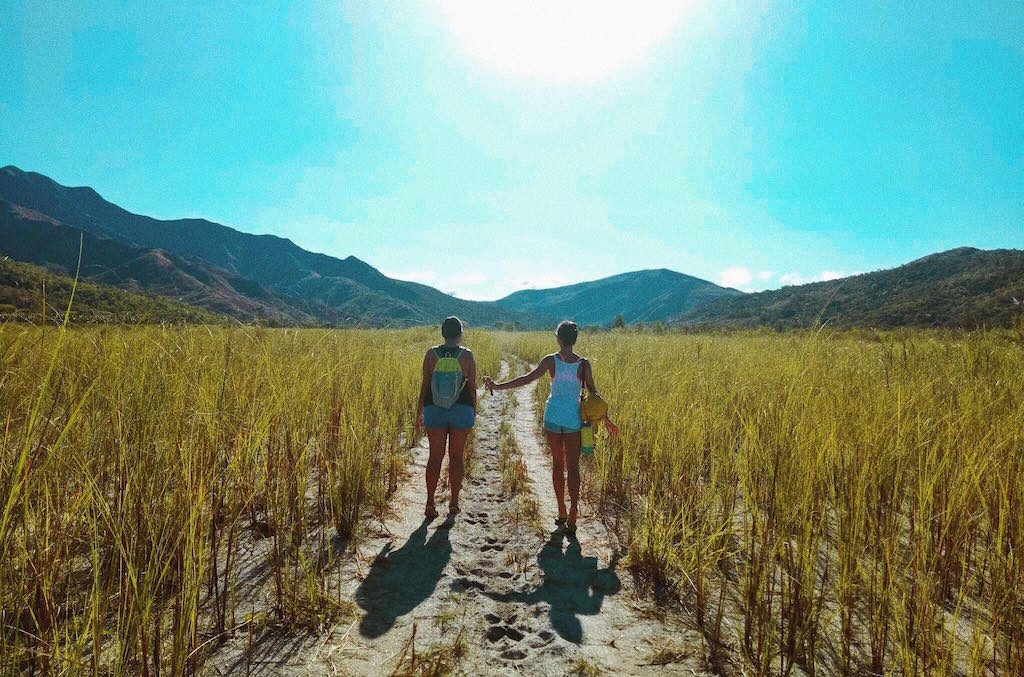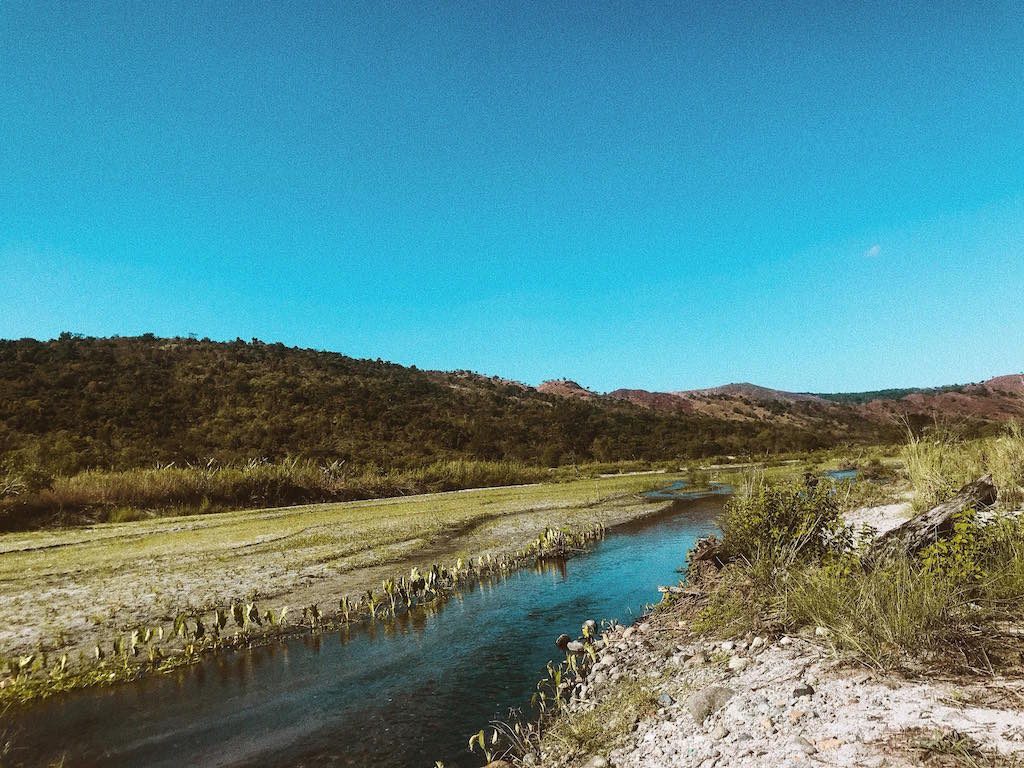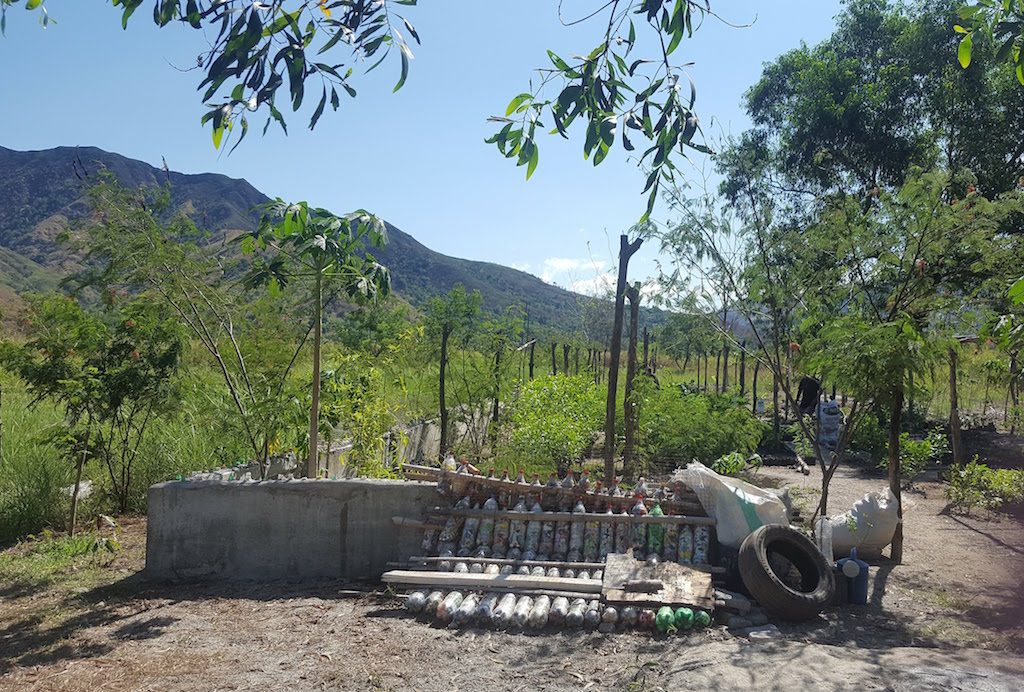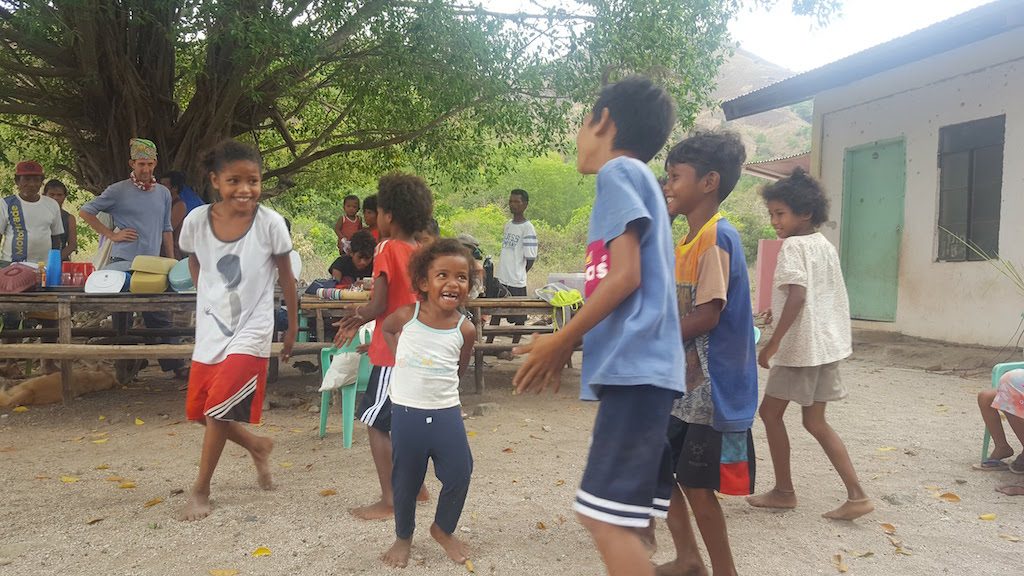SUMMARY
This is AI generated summarization, which may have errors. For context, always refer to the full article.

Not many people have been to Sitio Yangil in Zambales, but those who have won’t soon forget.
The journey alone is the kind that sears itself into memory. To get there, one has to walk for an hour through lahar-covered valley, which, whether muddy or dry, makes each step a test of balance. Depending on the season, one may also have to cross rushing streams, or endure an unrelenting sun.
It’s a route that’s been taken by the groups of travelers who join the Tribes and Treks tour, a joint project of MAD Travel and The Circle Hostel. MAD Travel is an organization whose name means Make A Difference – and promises travelers the opportunity to do just that with day trips that take them to local communities in Aurora and Zambales.
A travel org with that kind of name is bound to raise some skepticism especially in the Philippines, where all too often, the experiences of the underprivileged are put on display and exploited so that the privileged can assuage their middle-class guilt.
But MAD Travel is hardly concerned about privilege politics. In Zambales, the group’s concerns are much bigger: 3,000 hectares of lahar-strewn land, to be exact.
MAD’s tagline is “Adventure that matters” – and in that valley in Zambales, what matters most is the forest – or lack thereof.
The forest and its subsequent disappearance is central to the lives of the Aetas who call the valley their ancestral domain. According to founder and tour guide Raf Dionisio, once upon a time, the valley was fertile, but everything changed after Mount Pinatubo erupted in 1991.

The volcanic ash made it more difficult to plant, grow, and harvest. Without agriculture, the locals had to resort to cutting down trees and making charcoal out of them to survive. As a result, the land became even more infertile, and the Aetas even more pressed for livelihood.
The Aetas, Raf, and MAD Travel share the same goal: to reforest the land in a sustainable, environmentally-conscious way. It’s a goal that sounds simple enough, but one cannot help but think that it is also very ambitious – especially when walking through blistering hot volcanic ash, surrounded by a brown and patchy mountain view.
Tree-planting
But Raf and the Aetas are hopeful. They train their eyes on the tiny green patch amidst the brown mountains, and see a lush forest. They look at seedlings, and see tall trees.
Their positivity is catching – so much so that travelers gamely sit under the scorching heat, dig into a pile of carabao dung (used as fertilizer), and bury seed after seed in a pocket of soil. The number of seeds planted in a session ranges anywhere from hundreds to the low thousands.
Tree-planting is the first thing on the Tribes and Treks itinerary, during which participants spend a few hours in the Yangil nursery. In November 2016, the nursery wasn’t even a proper one – just rows and rows of seedlings grouped together in batches.

Today, it’s a veritable garden, a lush patch with its own water system. Plants are arranged according to specie: Kasuy, Ipil-Ipil, Calamansi, and Rambutan to name a few, chosen because of their potential to survive in the dry environment.
The trees are now in various states of growth – from newly-potted seeds, to tiny sprouts and seedlings, to teenage trees – as if to remind travelers while they plant that while the work can be tedious and slow, it is not futile.
Learning from locals
After tree-planting, travelers get to spend time with the local Aeta community — who are the future forest’s ultimate caretakers and beneficiaries.
When tour groups arrive in the village – no doubt weary from the trek and tree-planting – the locals are ready with their smiles, their jokes, their stories, and their questions. For a guest, it doesn’t feel like an immersion into a new culture, more like a visit to a friend’s home.
In the village, travelers play games with the local kids, learn archery and herbal medicine from the adults, and join in as the tribe performs their traditional tribal dances.

The locals also take the time to put some of their products on display: fruit, cashew nuts, honey, bamboo straws, handmade bracelets, all available for the tourists who want to help out in other ways. (After all, as Raf said, the community doesn’t benefit from handouts. They benefit from livelihood.)
It’s also the perfect time for the tour group to recharge their internal batteries before taking the long trek back – and as it turns out, a bench under one of the trees in the village is the perfect place to take a nap.
The entire trip only takes a day. The tour ends with a dinner at the home of the head chieftain of all 9 tribes who call the valley home. Near the chieftain’s home is a private beachfront with the perfect view of the sunset, and if the sky is kind and the timing is right, the day can very well end with a setting sun painting everything golden – a high point for sure, but by no means the best part of the day.
If one had to pin the day down to a moment, it may be well before that – at the point perhaps, where the seeds are tucked into the soil with some sort of prayer, knowing each of them has all the potential to someday become part of a forest. – Rappler.com
Tour packages start at P1,800 for a day trip, including lunch, snacks, dinner, and transfers within Zambales. For more information on MAD Travel’s tours, visit their website or their Facebook page.
Add a comment
How does this make you feel?
There are no comments yet. Add your comment to start the conversation.